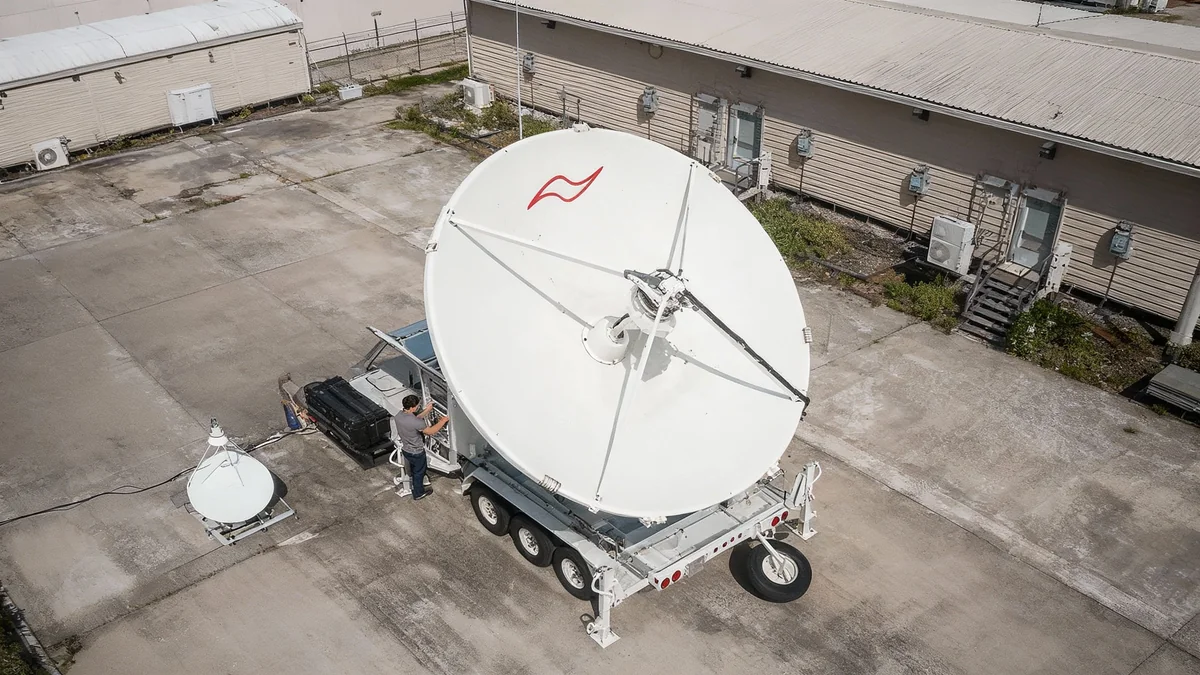The European Space Agency (ESA) is requesting €1 billion to develop a military-grade reconnaissance satellite network, signaling a major strategic shift for the traditionally civilian organization. The funding proposal is part of a larger budget request and reflects growing security concerns across Europe.
This move aims to provide European nations with autonomous, high-resolution intelligence capabilities. The new constellation is designed to deliver images with a refresh rate of less than 30 minutes, enhancing the continent's ability to respond to security threats and natural disasters.
Key Takeaways
- The European Space Agency plans to ask its 22 member states for €1 billion to fund a new defense and security satellite program.
- The program, named European Resilience from Space (ERS), will provide military-grade intelligence and surveillance capabilities.
- This represents a significant policy change for the ESA, which has historically focused exclusively on "peaceful purposes."
- The funding is part of a larger €22 billion budget request to be decided in November 2025.
A New Era for European Space Security
For over half a century, the European Space Agency operated under a mandate strictly limited to peaceful applications. Defense projects were considered off-limits, creating a clear line between the agency's scientific and exploration missions and Europe's military needs.
That long-standing policy is now undergoing a fundamental re-evaluation. Driven by a changing geopolitical landscape, the ESA's member states have reached a consensus to integrate security and defense into the agency's scope. The proposed €1 billion for the European Resilience from Space (ERS) program is the first concrete step in this new direction.
ESA Director General Josef Aschbacher confirmed the shift, stating that the agency's founding convention does not need to be changed. According to Aschbacher, the term "peaceful purposes" is now being interpreted to include defensive security measures.
"The best proof that member states agree with this interpretation is that they asked me to submit the program," Aschbacher noted during a conference in Vienna.
This reinterpretation allows the ESA to leverage its vast technical expertise and infrastructure to build capabilities that were previously managed at a fragmented national level. The goal is to create a unified, European-wide asset for intelligence and security.
Dissecting the European Resilience from Space Program
The €1 billion request for the ERS program is a preliminary investment, intended to bridge the gap until the European Union's next seven-year budget is approved in 2028. The funds are allocated across three primary components designed to enhance Europe's autonomy in space.
ERS Funding Breakdown
- €750 million: ERS-EO (Earth Observation). This is the largest portion, dedicated to developing the reconnaissance satellites that will supply ultra-high-resolution imagery.
- €250 million: ERS-Nav (Navigation). This component will support and enhance navigation capabilities, likely complementing the existing Galileo system.
- ERS-Com (Communications): While not assigned a specific budget from this initial billion, this element will support the EU's secure satellite communications network, IRIS², which is positioned as a future European alternative to systems like Starlink.
The Earth Observation component is particularly critical. It is designed to feed data into the European Commission's planned Earth Observation Governmental Service (EOGS), which is expected to become operational in 2028. The satellites developed under this program will provide rapid intelligence, a crucial capability for monitoring military movements, assessing natural disaster damage, and managing border security.
The plan is for participating nations to pool their existing space assets while jointly developing new ones. This collaborative model allows countries to retain control over their own satellites while making any excess capacity available to partners, creating a more resilient and efficient system for all.
A Response to Global Pressures
The push for an autonomous European space defense capability is not happening in a vacuum. Escalating geopolitical tensions, including the conflict in Ukraine and an evolving security relationship with the United States, have highlighted Europe's reliance on external partners for critical intelligence.
By developing its own sovereign satellite constellation, Europe aims to reduce this dependency and achieve what policymakers call "strategic autonomy." This means having the independent capacity to gather information and act on it without needing to rely on allies.
From Civilian Tools to Dual-Use Assets
Existing EU space programs like Galileo (navigation) and Copernicus (climate monitoring) are primarily civilian. However, the data they provide is already used for security purposes. The ERS program marks the first time the ESA will develop a system explicitly designed for governmental and military-grade intelligence, surveillance, and communication needs from the outset.
The first satellites from the ERS program could be launched as early as 2028, with a preference for using European launchers to further bolster the continent's space industry. This initiative is seen as a crucial step in ensuring Europe can independently safeguard its interests.
Navigating Bureaucracy and a Competitive Market
While the strategic vision is clear, its implementation faces challenges. The European Commission has proposed a new EU Space Act to create a harmonized legal framework for space activities across the continent. However, this legislation is not expected to be implemented until 2030 at the earliest.
This timeline presents a risk. The commercial space sector is moving at a rapid pace, dominated by American companies like SpaceX's Starlink and Amazon's Project Kuiper, as well as emerging constellations from China. A lengthy regulatory process in Europe could leave its own initiatives struggling to keep up.
Furthermore, the new rules could create costly compliance hurdles for non-EU space companies. For example, British firms, despite the UK being a major ESA contributor, would likely need to establish a legal entity within the EU to maintain full market access. This could reshape the industrial landscape of the European space sector.
The €1 billion request is a decisive move toward building a more secure and autonomous Europe from space. As Director General Aschbacher emphasized, the current approach is too fragmented. "We have an opportunity to change that, and we must," he said. The approval of this funding in 2025 will be a critical test of Europe's commitment to walking the walk on strategic autonomy.





